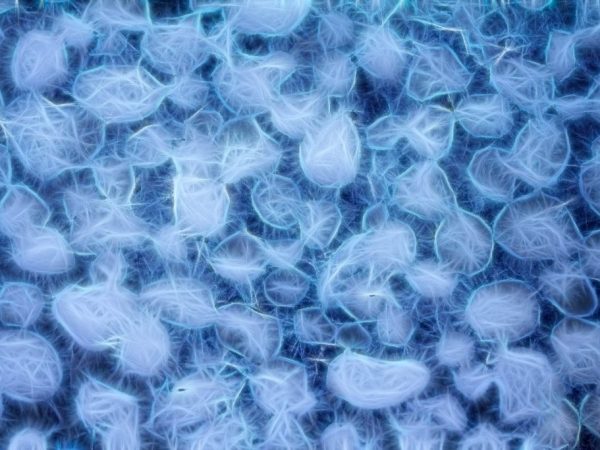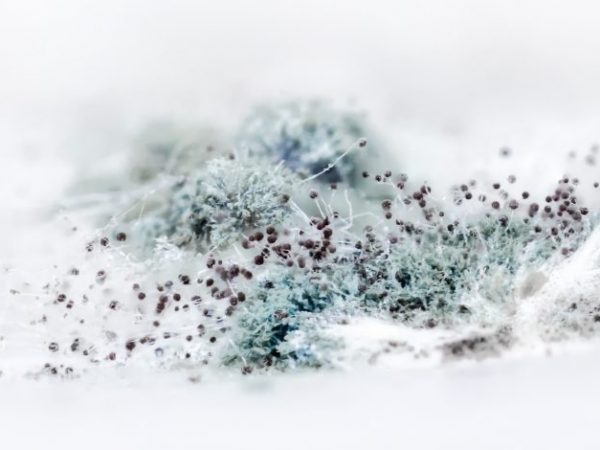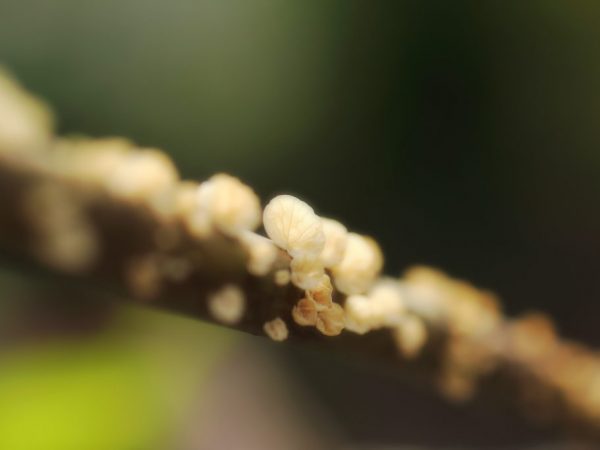Unicellular mushrooms
Not a single living organism on Earth possesses such properties as mushrooms. They are so complex that their kingdom has not yet been fully explored. Their classification, in contrast to that for plants or animals, is very interesting, if only because it necessarily takes into account the conventional division into "lower" and "higher" fungi. Mushrooms stand on a kind of border between two kingdoms of living nature - plants and animals. There are multicellular and unicellular fungi on Earth. The study of fungi is the science of mycology, which is referred to as botanical sciences, tk. mushrooms were previously included in the plant kingdom.

Unicellular mushrooms
The principle of division of mushrooms
These organisms are classified according to the presence or absence of mycelium and fruiting body. Basic types:
- hat;
- moldy;
- yeast.
Yeast is often referred to as a non-taxonomic group of unicellular fungi that have moved to permanent habitat in nutrient-rich environments (liquid and semi-liquid). There are species related to Ascomycetes, there are Basidiomycetes.
A person has repeatedly encountered each of these types in his life. Almost all unicellular fungi are yeasts, which number about 1500 species. The division into groups of lower and higher mushrooms is based on the principle of the structure of the mycelium:
- Lower: the mycelium in its structure has no partitions, therefore it is also called non-cellular.
- Higher: the mycelium is divided into cells (cellular).
According to the size of the organism, the mushrooms are divided into the following groups:
- Micromycetes: microscopically small organisms that represent the bulk of fungi.
- Macromycetes: this includes mushrooms that have a fruiting body that develops above the soil surface.
Description of unicellular
Some facts led scientists to think that fungi belong to a special group of plants without chlorophyll and chloroplasts.
With the development of science, studies have shown the presence in their composition of enzymes characteristic of animals. The property was revealed to move in the direction of light or food, which is characteristic of beings of the highest degree. It has been proven that mushrooms have the characteristics of animals that have locomotion organs.
All unicellular fungi share some characteristic identifying features:
- consist of 1 cell;
- multiply rapidly;
- the presence of a multinucleated mycelium;
- the presence of hyphae (thin filaments);
- microscopic size;
- lack of plastids;
- reproduction by spores;
- heterotrophic nutrition.
Thin threads (hyphae) are used for weaving and are the main ones for the formation of mycelium and fruiting body. Each cell wall of the fungus contains chitin, and the decay products contain urea.
Classification

Single-celled fungi multiply rapidly
All unicellular and multicellular fungi are subject to classification and systematization. The main unicellular groups include the following:
- Oomycetes: representatives of the class are characterized by a well-developed non-cellular mycelium.The simplest mushrooms from the order Saprolegnius resemble chytridiomycetes. Oomycetes are represented by ectrogella, lagena, etc.
- Chytridiomycetes: the mycelium is poorly developed, the thallus is a plasmodium (a vegetative body represented by a plasma mass with many nuclei and not having a cell membrane) with rhizoid hyphae. They are represented by olpidium, synchitrium, spisellomas, monoblepharid, etc. They feel good both in water and on land. To a greater extent, they parasitize on plants in water and on animals on land.
- Zygomycetes: the class is represented by fungi with a well-developed non-cellular or in a mature state mycelium divided into cells for separation from the bulk of the plasma of reproductive organs - reproductive organs. Among them are parasites in humans and animals. Sometimes plants are affected. Examples of zygomycetes: trichomycetes, mucor, zoopagalis, etc.
- Ascomycetes (partially): the class includes both unicellular and multicellular organisms. Yeast is a typical representative of unicellular ascomycetes.
Features of life
The kingdom of these organisms is enormous. Many of the representatives in the process of evolution found a place for themselves in the earth and in the water.
All the processes that accompany their lives lead to the release of certain enzymes, with the help of which they subsequently receive food for themselves.
Releasing formations that resemble rhizoids, they quickly stick to the intended place and absorb food. Some representatives make it with their surface.
Zoopagalis have learned to feed on small insects, arthropods or protozoa, which themselves adhere to their outer layer.
The sticky surface gradually digests whatever is on it. Therefore, zoopagalis are considered predators.
Yeast works differently. They produce enzymes and chemical compounds in their bodies that allow them to survive by using sugars for their food during fermentation. The vital activity of other organisms makes it possible to obtain the necessary substances for the creation of drugs.
In reproduction, the simplest mushrooms are similar, almost everyone does not do it sexually. These unicellular organisms have few common features; it is difficult to combine them. Therefore, the processes of life, the structure and description of each are best considered separately.
Description of species

There are many varieties of unicellular fungi in the world.
All of these organisms have certain lifestyle and reproduction characteristics. The mycelium is almost undeveloped, and movement occurs due to the flagella. Soil specimens form mycorrhiza with plant roots. Their cellular composition is similar. These are mainly parasites, obligate or optional, that humanity encounters every day.
Mukor mold
The most striking and well-known representative is mold, and in particular its typical form is the mucor mushroom. It is found both on soil in the form of gray, and in damp rooms (in the basement or bathroom) or food that has been stored in not quite proper conditions for a long time.
The mycelium of this unicellular fungus is characterized by the presence of many nuclei. and has a large branching mycelium, it has only one cell. Belongs to zygomycetes, from which a Chinese sourdough is prepared, similar to our yeast. The enzymes that these organisms contain in their composition are used for medicinal purposes.
Irina Selyutina (Biologist):
Representatives of the Mukor genus in the countries of the Asian continent are used as one of the components of the leaven ("Chinese yeast", "raga") or directly to obtain fermented food, because soy cheese, tempeh. For cooking, soy beans, cereals (rice, etc.), coconut kernels are used. Mukorovye also find their use for obtaining alcohol from potato tubers.
Some mucorous are capable of causing mycoses (mucoromycosis) of the lungs (false tuberculosis), the brain or other organs of humans, poultry and farm animals. These include, for example, branched apse, small mucor, Kona's rhizopus.
Outwardly, the mucor colony looks like a gray fluff or beige bloom. It causes decomposition of organic matter and serves as a natural orderly.
Yeast
Yeast fungus is known to all housewives who have come across homemade baked goods at least once. This organism lives in constantly budding colonies. Consists of one mycelium, part of the septum is missing; they are considered useful organisms. Some strains have been artificially bred.
By their nature, protozoan yeasts are facultative parasites. Like most living organisms, they can breathe oxygen and emit carbon dioxide. When interacting with sugar, fermentation occurs. Different species feed on substrates. Some interact better with hexose, while others interact better with lipids or proteins. As a result of their vital activity, diacetyl, fusel oils, dimethyl sulfide and isoamyl alcohol are formed - the result of fermentation.
Parasites
Among unicellular organisms, there are representatives dangerous to humans that are capable of causing a variety of diseases. The list of parasitic representatives is quite large. The most famous are those that cause diseases of the skin, hair, nails in humans, harm plants and animals.
Skin diseases can cause trichophyton and microsporum. Candida is the cause of candidiasis in women. Nails suffer from dermatophytes. Deprive and black spots on the body causes the piedra.
Irina Selyutina (Biologist):
Diagnoses of mycosis of the scalp are established on the basis of the data of the so-called. the clinical picture and microscopy of the hair pulled out for examination (scraping of scales) in a wet preparation using KOH. The study of the external and internal appearance of the hair shaft, the size of the spores - allow identifying the parasite and prescribing treatment.
Late blight is dangerous for plants. It affects the root system and foliage. Rot occurs, some of the plants die.
Meaning for a person
These organisms are of great importance in human life. They are good helpers in various important processes. So, for the hostess, fermentation of yeast is important, in agriculture they help to decompose waste, are natural "decomposers" of organic matter, which significantly speeds up the process without the use of chemicals. Single-celled organisms are essential for the development of the food industry. They are used to prepare feed for animals and birds.
They are important in cooking, cosmetology, medicine and pharmaceuticals. Many medicines are based on different types of mold.
Conclusion
The largest and most developed part of living organisms is fungi. It consists of different types and orders, there are multicellular or unicellular. These are the most ancient inhabitants of the Earth, whose nature has not been fully studied. Humanity is not able to do without them, although many of them are parasites.




